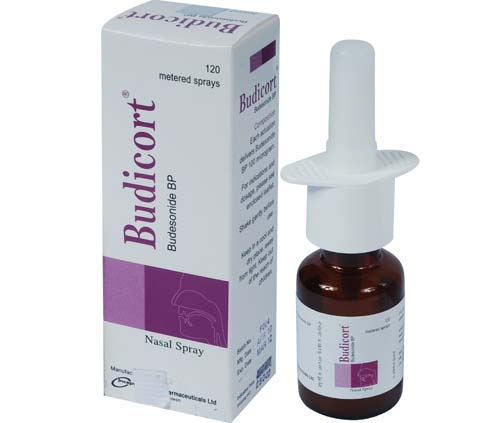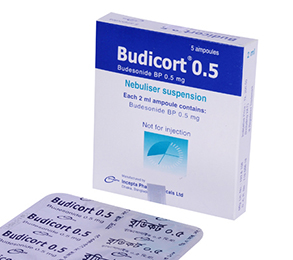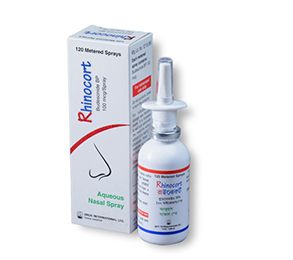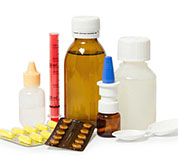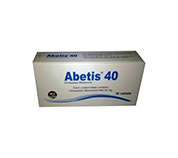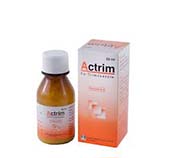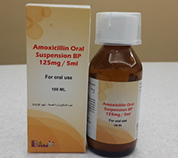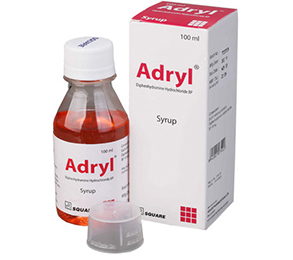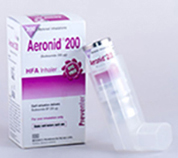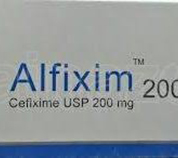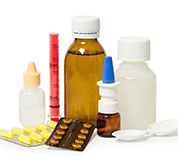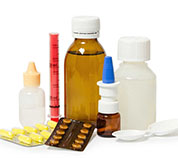Budicort Nasal Spary 1 Pc
Alternative products
Budesonide
Indications
- Prophylaxis and treatment of seasonal and perennial allergic rhinitis.
- Prophylaxis and treatment of vasomotor rhinitis.
- Symptomatic relief of nasal polyposis.
- Prevention against nasal polyps after polypectomy.
Therapeutic Class
Nasal Decongestants & Other Nasal Preparations, Respiratory corticosteroids
Pharmacology
Budesonide is a synthetic corticosteroid having potent glucocorticoid activity and weak mineralocorticoid activity. It has approximately a 200-fold higher affinity for the glucocorticoid receptor and a 1000-fold higher topical anti-inflammatory potency than cortisol. Corticosteroids have been shown to have a wide range of inhibitory activities against multiple cell types (e.g. mast cell, eosinophil, neutrophil, macrophage, and lymphocyte) and mediators (e.g. histamine, eicosanoids, leukotriene, and cytokine) involved in allergic mediated inflammation.
Dosage
Adults and children 6 years of age and older: 100 mcg per day administered as one spray per nostril once daily.
Adults (12 years of age and older): The maximum recommended dose is 400 mcg per day administered as four sprays per nostril once daily.
Pediatric Use: Safety and effectiveness in pediatric patients below 6 years of age have not been established.
* চিকিৎসকের পরামর্শ মোতাবেক ঔষধ সেবন করুন'
Administration
How to use the Nasal Spray-
- Shake the bottle gently and remove the dust cover.
- Hold the spray with your forefinger and middle finger on either side of the nozzle and your thumb underneath the bottle. Press down until a fine spray appears. If using for the first time or if you have not used it for a week or more, press the nasal applicator several times until a fine moist comes out from the container.
- Gently blow the nose to clear the nostrils.
- Close one nostril and carefully insert the nasal applicator into the open nostril. Tilt your head forward slightly and keep the spray upright. Breathe in through your nose and while breathing in, press the white-collar of nasal applicator firmly down once to release a spray.
- Breathe out through your mouth.
- Repeat the above steps in the same/ other nostril for consecutive doses.
Cleaning: The nasal spray should be cleaned at least once a week. The procedures are as follows-
- Remove the dust cover.
- Gently pull off the nasal applicator.
- Wash the applicator and dust cover in warm water.
- Shake off the excess water and leave to dry in a normal place. Avoid to apply additional heat.
- Gently push the applicator back on the top of the bottle and re-fix the dust cover.
* চিকিৎসকের পরামর্শ মোতাবেক ঔষধ সেবন করুন'
Interaction
No significant drug interaction has been reported.
Side Effects
Adverse local reactions following budesonide use are mild and usually transient. Systemic side effects have not been reported during clinical studies of budesonide nasal preparations. Sneezing, headache, sore throat, dry mouth, nausea etc. have been reported as the common side effects.
Pregnancy & Lactation
Pregnancy: Inhaled budesonide has been assigned to pregnancy category B by the FDA. Budesonide has not been shown to be teratogenic in animals when given in high doses by inhalation. Despite the animal findings, it would appear that the possibility of fetal harm is remote if the inhaled drug is used during pregnancy. Nevertheless, because the studies in humans cannot rule out the possibility of harm, inhaled budesonide should be used during pregnancy only if clearly needed.
Lactation: The amounts of inhaled budesonide excreted into breastmilk are minute and infant exposure is negligible. Reviewers and an expert panel consider inhaled corticosteroids acceptable to use during breastfeeding. When taken by mouth, budesonide is only about 9% bioavailable; bioavailability in the infant is likely to be similarly low for any budesonide that enters the breastmilk.
Precautions & Warnings
Budesonide nasal spray should be used with caution in patients with active or quiescent tuberculous infection, untreated fungal, bacterial, or systemic viral infections, or ocular herpes simplex infection. Patients with recent nasal septal ulcers, nasal surgery, or nasal trauma should not use a nasal corticosteroid.
Overdose Effects
Like any other nasally administered corticosteroids, acute overdosing is unlikely in view of the total amount of active ingredient present. Clinically significant systemic adverse events would most likely not occurs if the entire contents of the bottle were administered all at once, via either oral or nasal application. Chronic overdosage may result in signs/symptoms of hypercorticism.
Storage Conditions
Keep below 30°C temperature, away from light & moisture. Keep out of the reach of children.
- Type Spray
- Tag
- Morbi leo risus
- Porta ac consectetur ac
- Vestibulum at eros
